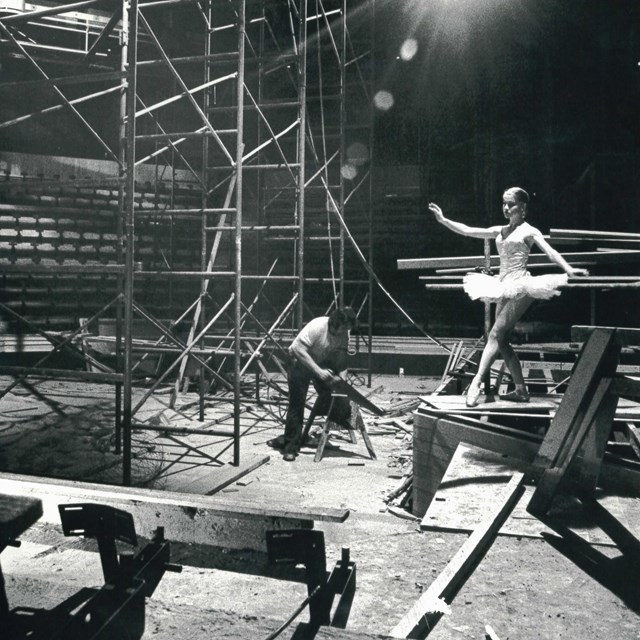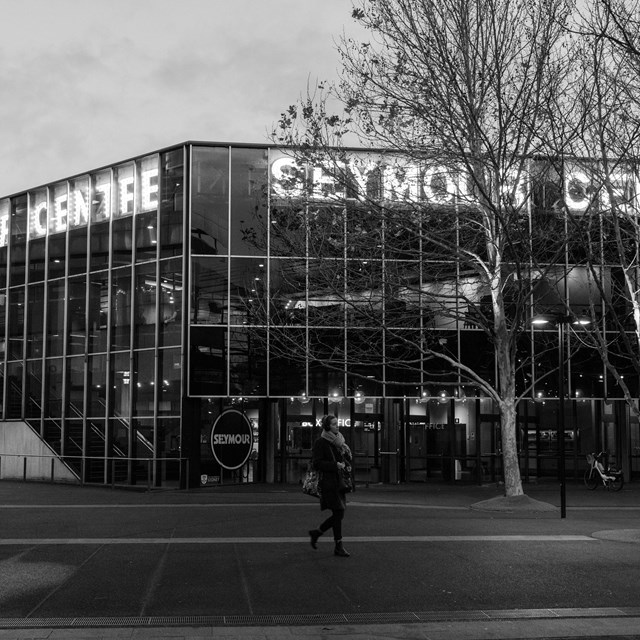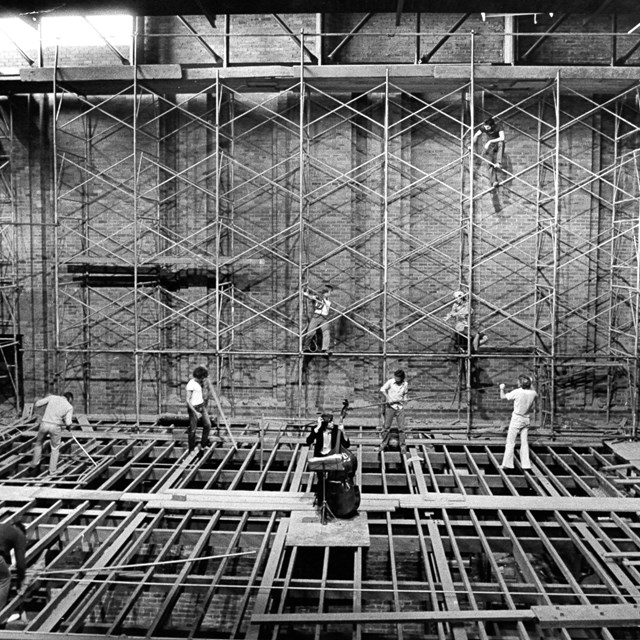Gay Sydney: A Memoir
William Yang on Australia's Queer past, present and future
As we look forward to celebrating Sydney WorldPride at the Seymour, internationally renowned performance artist and photographer, William Yang, reflects on coming out as a gay man in Australia in the early seventies, and his experience of key moments in Sydney's Queer history. You can learn more about William's life and work in his show, Gay Sydney: A Memoir, playing at the Seymour as part of Sydney WorldPride.
I was still in the closet when I came to Sydney in 1969, the same year as Stonewall about which I’d never heard.
I had a gay friend here whom I knew as a student in Brisbane and he introduced me to a group of older gay men, and they took me to gay places like The Purple Onion in Kensington and Capriccios in Oxford Street. So that was the first step in coming out.
In the seventies there was a gay political group consisting of gay men and lesbians called CAMP Inc. As activists they did the heavy lifting. I never went to the meetings, I only went to the parties.
I went to a film called Word Is Out at the Paris Theatre—it was a documentary film about Gay Liberation in the USA. It confirmed Gay Liberation was a worldwide event, at least in English-speaking countries, and we were not alone.
I met Dennis Altman. He had written a book called Homosexual: Oppression and Liberation, which had been released in several countries. He became a media spokesperson for the movement.
At the film I saw a long haired muscular young man who I’d seen riding a bike down Oxford Street and I thought, “OMG he’s gay. Oh brave new world that has such creatures in it.”
I met Peter Tully and David McDiarmid. They were artists from Melbourne and we became good friends. David did gay-identified works, and as such he was a huge influence for me. Peter went on to become the director of the Mardi Gras in 1982. He had great flair for costume and design and under his direction the Mardi Gras quickly became the prototype for the modern Mardi Gras.
The Mardi Gras has its own history. The first Mardi Gras in 1978 ended with people being arrested so it had its origins in protest, and the people who took part are called the 78ers as a badge of honour.
During the eighties it was largely a grass roots movement, small but very creative and political. In the nineties it became big and corporate, and the cultural festival associated with the Mardi Gras had big budgets. Then in the noughties it went bankrupt, it collapsed. Somehow Mardi Gras managed to survive.
The Mardi Gras went on television in 1994, and I think that was the biggest reason for people changing their minds about the gay and lesbian movement. It got into people’s living rooms all over Australia, it started conversations.
In 1985, in the time of the AIDS crisis, the theme of Mardi Gras was Fighting for Our Lives. Our enemies tried to ban Mardi Gras, but they were unsuccessful. AIDS took a heavy toll on our community although in some way it brought gay men and lesbians together.
Now Mardi Gras is a large community affair, a bit unwieldly, but it has energy and enthusiasm, and young people. I am quite optimistic about the future and WorldPride is a stunning event to showcase Sydney’s LGBTIQ community to the world.
William Yang
Writer and director, Gay Sydney: A Memoir
14 February 2023
Gay Sydney: A Memoir plays 19 - 23 February. Buy tickets now.
Image credit: William Yang
From 19 to 23 February, join internationally renowned performance artist and one of Australia’s greatest storytellers, William Yang, as he explores the heady and turbulent scenes of 1970s Sydney, the vibrant history of Mardi Gras, and our city's ever-evolving GLBTIQ story.
Buy ticketsAs we look forward to celebrating Sydney WorldPride at the Seymour, internationally renowned performance artist and photographer, William Yang, reflects on coming out as a gay man in Australia in the early seventies, and his experience of key moments in Sydney's Queer history. You can learn more about William's life and work in his show, Gay Sydney: A Memoir, playing at the Seymour as part of Sydney WorldPride.
I was still in the closet when I came to Sydney in 1969, the same year as Stonewall about which I’d never heard.
I had a gay friend here whom I knew as a student in Brisbane and he introduced me to a group of older gay men, and they took me to gay places like The Purple Onion in Kensington and Capriccios in Oxford Street. So that was the first step in coming out.
In the seventies there was a gay political group consisting of gay men and lesbians called CAMP Inc. As activists they did the heavy lifting. I never went to the meetings, I only went to the parties.
I went to a film called Word Is Out at the Paris Theatre—it was a documentary film about Gay Liberation in the USA. It confirmed Gay Liberation was a worldwide event, at least in English-speaking countries, and we were not alone.
I met Dennis Altman. He had written a book called Homosexual: Oppression and Liberation, which had been released in several countries. He became a media spokesperson for the movement.
At the film I saw a long haired muscular young man who I’d seen riding a bike down Oxford Street and I thought, “OMG he’s gay. Oh brave new world that has such creatures in it.”
I met Peter Tully and David McDiarmid. They were artists from Melbourne and we became good friends. David did gay-identified works, and as such he was a huge influence for me. Peter went on to become the director of the Mardi Gras in 1982. He had great flair for costume and design and under his direction the Mardi Gras quickly became the prototype for the modern Mardi Gras.
The Mardi Gras has its own history. The first Mardi Gras in 1978 ended with people being arrested so it had its origins in protest, and the people who took part are called the 78ers as a badge of honour.
During the eighties it was largely a grass roots movement, small but very creative and political. In the nineties it became big and corporate, and the cultural festival associated with the Mardi Gras had big budgets. Then in the noughties it went bankrupt, it collapsed. Somehow Mardi Gras managed to survive.
The Mardi Gras went on television in 1994, and I think that was the biggest reason for people changing their minds about the gay and lesbian movement. It got into people’s living rooms all over Australia, it started conversations.
In 1985, in the time of the AIDS crisis, the theme of Mardi Gras was Fighting for Our Lives. Our enemies tried to ban Mardi Gras, but they were unsuccessful. AIDS took a heavy toll on our community although in some way it brought gay men and lesbians together.
Now Mardi Gras is a large community affair, a bit unwieldly, but it has energy and enthusiasm, and young people. I am quite optimistic about the future and WorldPride is a stunning event to showcase Sydney’s LGBTIQ community to the world.
William Yang
Writer and director, Gay Sydney: A Memoir
14 February 2023
Gay Sydney: A Memoir plays 19 - 23 February. Buy tickets now.
Image credit: William Yang
From 19 to 23 February, join internationally renowned performance artist and one of Australia’s greatest storytellers, William Yang, as he explores the heady and turbulent scenes of 1970s Sydney, the vibrant history of Mardi Gras, and our city's ever-evolving GLBTIQ story.
Buy tickets







